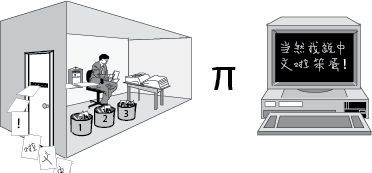Man in Chinese Room doesn't instantiate a progam
A human being (or a homunculus) shuffling symbols in a room is not a proper instantiation of a computer program, and so the Chinese room argument does not refute AI.

Note: for more multiple realisability arguments see the "Is the brain a computer?" arguments on Map 1, the "Can functional states generate consciousness?" arguments on Map 6 and sidebar "Formal systems: an overview" on Map 7.